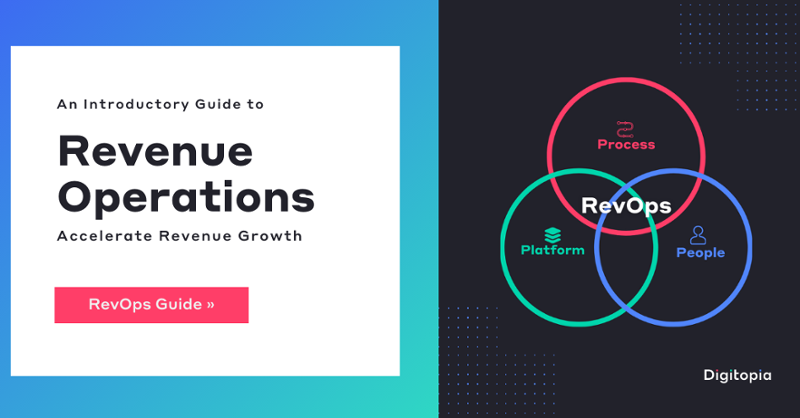What is the Difference between RevOps and Growth Hacking
by DJ Shirley | Updated Nov 6, 2021
"What is the difference between RevOps and Growth Hacking" is a question we have received several times in recent weeks.
Business leaders want to know the difference to see if they need to activate a Growth Hacking or RevOps approach in their organization. And to be fair, the confusion is understandable since the underlying spirit of each approach is similar. Both focus on optimizing an organization's macro funnel to increase output without increasing input. Also, they are both highly dependent on collecting accurate data, so future adjustments are data-driven.
The easiest distinction to first identify is if you are a B2B or B2C organization. If you are a B2B organization providing a solution-based offering, you can focus on RevOps. If you are a B2C organization with a short sales cycle, it's safe to say you should first explore a growth hacking approach. However, a RevOps mentality can also apply to specific B2C organizations in collaboration with a Growth Hacking strategy.
If you need more clarity, you can conduct a deeper evaluation of the 4 core differences between the approaches. The categories include Sale Cycle Length, Volume, Frequency, and Offering type.
Sales Cycle
The sale cycle for growth hackers is short and has the possibility of converting on a single visit. Think of an e-commerce based brand that has a high likelihood to convert during an individual's first experience. RevOps, on the other hand, is focused on optimizing long-term sales cycles with multiple stages of the buyer journey. For example, a RevOps approach may focus on providing value through educating so you can nurture trust with a potential customer before the relationship can evolve into a sales conversation.
Volume:
In order to properly carry out a growth hacking approach, you need a high volume of potential customers going through your funnel. Growth hacking needs hundreds if not thousands of sales each month to properly implement growth hacking practices. RevOps can support both high volume and low volume funnels. This is due to the frequency at which optimization changes are implemented within the organization. Adjustments are not as rapid with RevOps which results is a more flexible feedback loop that allows for longer periods of time between sales.
Adjustment Frequency
Growth hacking is a fast-paced process devoted to regularly making adjustments, sometimes multiple modifications in a single day. The majority of the changes are department-centric and external facing. Examples include testing a new upsell idea on a thank you page, modifying a marketing activity, or tweaking a key step in the check-out process.
RevOps has a slower approach to making adjustments that impact the customer journey. RevOps modifies internal processes and infrastructure, which requires cross-departmental coordination. As a result, the successful rollout of RevOps triggered adjustments are less frequent than a Growth Hacking approach.
Offering
The offering between RevOps and growth hacking varies. Growth hacking is centered around a transactional exchange and is based on the sales cycle and frequency. RevOps focuses on a solution-based offering that typically involves a long-term or recurring commitment.
Considering these differences, you can identify if a Growth Hacking or RevOps approach is more suitable for your organization.
In Summary
Both RevOps and Growth Hacking focus on optimizing the revenue potential of an organization. Growth hacking is hyper-focused on making rapid adjustments to all the inflection points within a funnel. RevOps is centered around optimizing the customer experience for longer sales cycles and solution-based offerings.
To learn more about taking a RevOps approach with your organization, you can explore our RevOps Guide.
Our guide to RevOps provides an in-depth breakdown of revenue operations and best practices for implementing RevOps in your organization.









